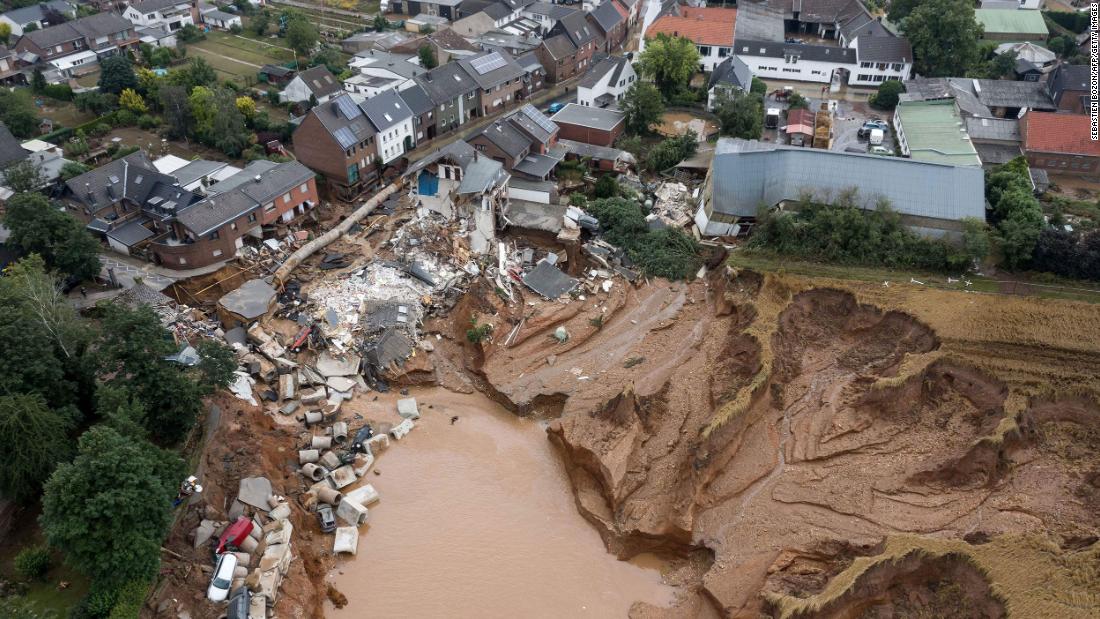The past seven years have been the warmest in history

(CNN) – The past seven years have been the hottest on record, according to new data, as Earth’s temperature continues to rise precariously due to greenhouse gas emissions. Fossil fuels That heat is a trap.
New analysis by the European Union’s Copernicus Climate Change Service, which tracks global temperatures and other climate indicators, reveals that 2021 was the fifth hottest year on record.
Although the long-term trend is upward, annual fluctuations in global temperatures are expected, particularly due to large-scale meteorological and oceanic patterns, such as El Niño and La Niña, the latter being in 2021 and tending to cause a cooler overall temperature.
“The most important thing is not to have a particular overall rating, but to see the big picture of constantly rising temperatures, and this continued warming does not mean that each year will be warmer than the next,” said Freya Famburg. Copernicus’ principal scientist. “But that’s what we’ve seen so far, with each decade warmer than the last, and this is very likely to continue.”
According to Copernicus, Earth’s average temperature is about 1.1°C above pre-industrial average levels, which is 73% of the way towards the 1.5°C threshold that scientists warn the planet must maintain to avoid it. The worst effects of climate change.
Kim Cobb, director of the Global Change Program at Georgia Institute of Technology, said the 1.1°C warming is a “conservative” estimate.
“It’s very fair to say that 1.1 degrees Celsius is moderate, because the latter half of the last decade has been much warmer than the first,” Cope, who was not involved in the report, told CNN.
Even at 1.1 degrees, 2021 made clear that the world is already feeling the unprecedented effects of the climate crisis for which many have not prepared, including melting in the arcticAnd fatal floodsAnd heat waves Unprecedented and historic droughts. Copernicus also found that global concentrations of greenhouse gases, the root cause of the climate crisis and increasingly serious disasters, keep increasing.
1.1 °C
In 2015, world leaders agreed to pay attention to Scientists’ warnings Limiting the rapid rise in global temperature to less than 2°C above pre-industrial levels, with a preferred target of 1.5°C.
This threshold may not seem like much, but NASA scientists They say it’s similar to how a rise in body temperature of a degree or two causes a fever. With each fraction of the degree of warming, the disease worsens and the likelihood of needing hospital treatment increases.
In The State of the Planet, scientists track global warming from a baseline at the start of the Industrial Revolution, in the mid-to-late 19th century, when humans increased burning of fossil fuels as fuels. and oil.
An elderly woman was forced to leave her home after a forest fire ravaged the island of Eboia, Greece, in August. (Photo: Konstantinos Tsakalidis/Bloomberg)
For every future increase in warming, Cobb says, the latest climate research describes cascading consequences that would threaten all aspects and needs of the Earth, such as biodiversity, fresh water and food supplies.
“We’ve barely crossed the one-degree warming threshold, and yet we’re seeing an almost constant series of extreme weather events,” Cobb told CNN. “With rare exceptions, these extremes can certainly be linked to human-caused warming. In the future, we should expect the frequency and intensity of these extremes to increase, taking a heavy toll on societies around the world.”
2021 brought with it heat waves and floods that became events with it mass victims rain fell on Greenland Peak For the first time in history. and one Historic drought It devastated most of the western United States, resulting in large and devastating wildfires and water shortage never seen before.
Almost every corner of the world has felt the effects of the rapid warming of the planet. The Copernican researchers pointed to several regions that recorded the highest average temperatures in 2021, from the western United States and Canada to Greenland, as well as large swathes of central and northern Africa and the Middle East.
The agency reported that last year’s summer in Europe was the warmest on record, with several extreme weather events causing havoc across the continent, including fatal ones. Floods in GermanyBelgium and the Netherlands, as well as severe forest fires in the eastern and central Mediterranean.
In North America, the analysis revealed periods of incredible temperature deviations from the norm, including scorching heat wave In the Pacific Northwest and British Columbia. generalized effects of Dixie fire, which is the second largest ever registered company in California, which Spreading harmful smoke across the continent.
As symptoms of a feverish planet worsen, the United Nations Intergovernmental Panel on Climate Change (IPCC) concluded in August The only way to stop this worrying trend is by drastically reducing greenhouse gas emissions while eliminating the greenhouse gases humans have already introduced into the atmosphere.
An “inspiring” reason for hope
In November, the Climate Action Tracker warned that the world was on track to make it happen 2.4 degree heating, if not more, despite countries’ new climate commitments, including those agreed in United Nations Climate Conference Held in Glasgow (COP26).
Experts have warned that global greenhouse gas emissions in 2030 will still be about twice what is needed to limit warming to 1.5 degrees. Even worse, with current policies, not with proposals, but with what countries are doing now, the organization expects global temperatures to rise catastrophically by 2.7°C.
At that time, the planet would be in a critical situation. The Copernicus report showed that carbon emissions continued their rapid trend in 2021, despite the global pandemic. Emissions of methane, a greenhouse gas about 80 times more powerful than carbon dioxide in the short term, have continued to rise “very dramatically”.
Famburg noted that the report serves as a reminder that increasing greenhouse gas emissions are fueling the planet’s rapid warming, adding that “the global temperature curve will continue to rise as long as we continue to emit greenhouse gases.”
Human reward for Prevent the planet from exceeding 1.5 degrees CelsiusIt should be more than enough to spark a bold and collective action, Cope said. Choosing to limit fossil fuel emissions to that point could “cool the planet in the second half of this century”.
“The idea that we can live to see a reversal of global warming is inspiring, as generations have experienced decade after decade of warming,” Cobb said. “It’s a future worth fighting for and giving life for, one energy choice at a time.”

“Bacon advocate. Certified creator. Twitteraholic. Tv junkie. Beer fanatic. Internet nerd. Passionate thinker. Reader.”




:quality(85)/cloudfront-us-east-1.images.arcpublishing.com/infobae/OF4NJDPGLBEYJAZ5XZMH3OIPJ4.jpg)



